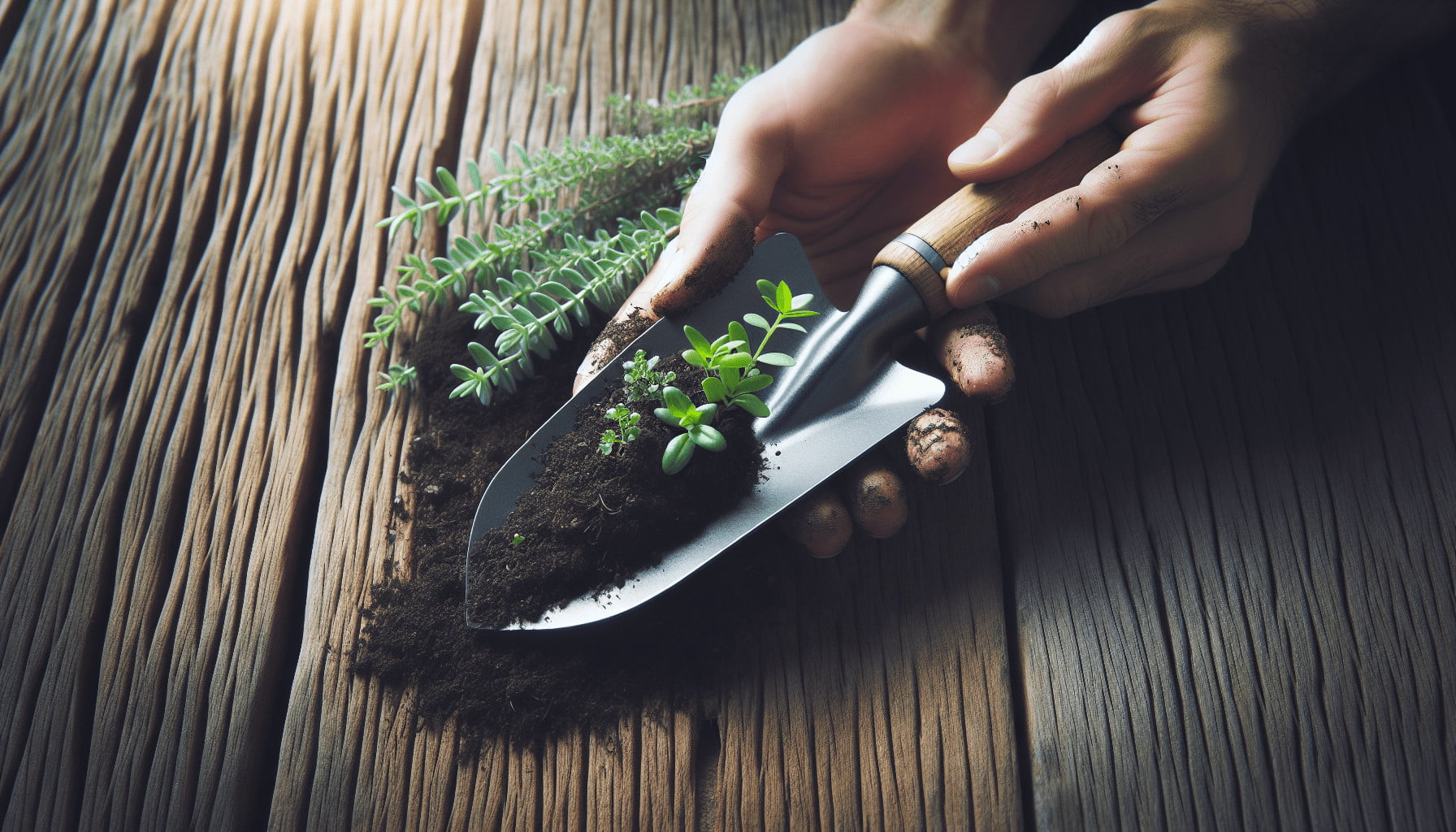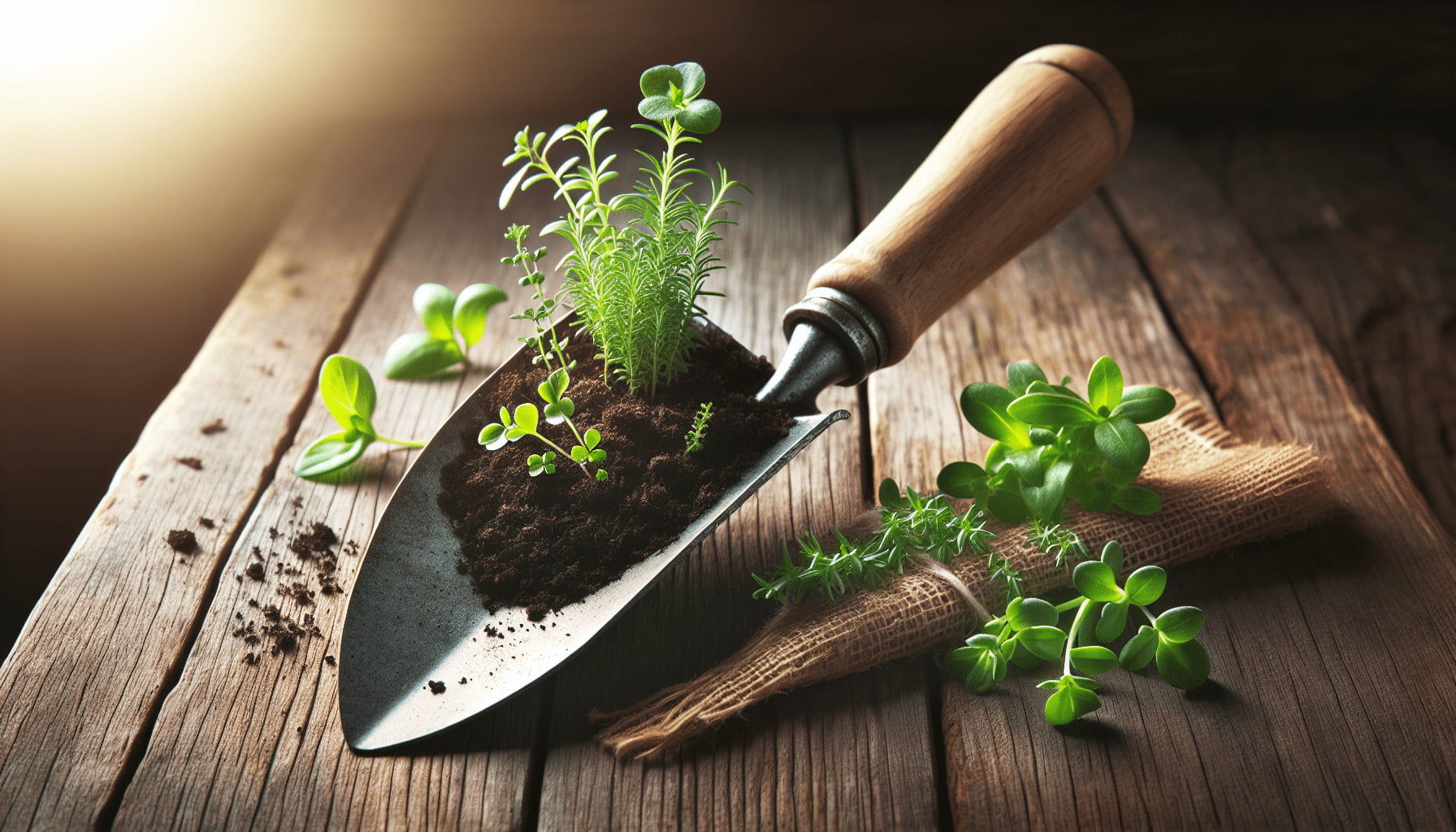Have you ever wondered what tools you’ll need to transform your rooftop into a lush, green oasis? Rooftop gardening can be a rewarding hobby that provides fresh produce, enhances your living space, and helps the environment. However, having the right tools at your disposal is essential for making your rooftop garden thrive.

Essential Hand Tools for Rooftop Gardens
Trowel
A trowel is a must-have for any gardener, especially in a compact space like a rooftop garden. This small hand tool is ideal for digging holes, planting seeds, and transferring plants or soil. Its ergonomic handle ensures comfort during extended use, making it easier for you to tend to your plants without straining your hands.
Pruning Shears
Pruning shears are perfect for trimming and shaping your plants. They help to remove dead or diseased branches, encouraging healthier plant growth. When selecting pruning shears, look for a pair with a comfortable grip and sharp blades to ensure clean cuts and reduce the risk of injury to your plants.
Garden Fork
A garden fork is essential for aerating the soil and making it easier for water and nutrients to reach your plants’ roots. It’s also useful for breaking up compact soil and removing weeds. A sturdy garden fork with a comfortable handle will make your gardening tasks easier and more efficient.
Specialized Hand Tools for Rooftop Gardening
Hand Cultivator
A hand cultivator helps you mix soil and compost, break up clumps, and prepare the ground for planting. Its small size makes it perfect for working in confined spaces, such as pots and raised garden beds often found on rooftops. This tool will help you maintain healthy soil structure and promote better plant growth.
Hori Hori Knife
The Hori Hori knife is a versatile tool that can be used for a wide range of gardening tasks, including digging, cutting, and weeding. With its sturdy blade and comfortable handle, this tool is perfect for tackling the unique challenges of rooftop gardening. It can even be used to measure planting depths thanks to its built-in ruler.
Watering Can
Managing water is crucial in a rooftop garden, where plants are often exposed to more wind and sunlight. A watering can with a long spout allows you to deliver water directly to the base of your plants, reducing waste and ensuring they get the hydration they need. Opt for a can that’s lightweight and easy to handle, especially when full.
Protective Equipment
Gardening Gloves
Protecting your hands while gardening is essential, and a good pair of gardening gloves will shield you from thorns, splinters, and other irritants. Look for gloves that are durable yet flexible, allowing you to perform delicate tasks like planting seeds or trimming small branches.
Knee Pads
Knee pads can make a significant difference in your comfort level while working in your rooftop garden. They protect your knees from hard surfaces and sharp objects, making it easier for you to spend more time tending to your plants. Choose knee pads that are adjustable and provide ample cushioning to keep your joints protected.
Strategies for Efficient Rooftop Gardening
Multi-Functional Tools
When space is limited, it’s beneficial to invest in tools that serve multiple purposes. For instance, a combination hoe and cultivator can help you perform several tasks without cluttering your garden area with numerous tools. Multi-functional tools save space and can make your gardening experience more streamlined and enjoyable.
Proper Storage Solutions
Keeping your hand tools organized and accessible is key to efficient gardening. Consider using a tool bag or a wall-mounted rack to store your tools neatly. Waterproof storage options are particularly useful for rooftop gardens, as they protect your tools from the elements and prolong their lifespan.
Regular Maintenance
Maintaining your garden tools is crucial for their longevity and performance. Clean your tools after each use to prevent rust and wear, and sharpen blades as needed. Proper maintenance ensures your tools remain effective and reduces the need for frequent replacements.

Making the Most of Your Rooftop Garden
Maximizing Space
Limited space is often a challenge in rooftop gardening, but with creative planning, you can make the most of the area you have. Utilize vertical gardening techniques, such as trellises and hanging planters, to maximize space and add variety to your garden. Consider using stackable planters or tiered garden beds to create additional planting areas.
Choosing the Right Plants
The success of your rooftop garden largely depends on the plants you choose. Opt for plants that are well-suited to your climate and the specific conditions of your rooftop. Drought-tolerant plants are an excellent choice for rooftop gardens, as they can withstand periods of limited water availability. Additionally, consider growing compact or dwarf varieties of vegetables and herbs to make the most of your space.
Soil and Fertilizer
Choosing the right soil and fertilizer is crucial for the health of your plants. Use a high-quality potting mix that provides good drainage and aeration. Adding organic matter, such as compost, can improve soil fertility and structure. Regularly fertilize your plants with a balanced, water-soluble fertilizer to ensure they receive the essential nutrients they need to thrive.
Water Management
Effective water management is key to a successful rooftop garden. Overwatering can lead to root rot, while under-watering can stress your plants. Use a drip irrigation system or soaker hoses to provide a consistent water supply directly to the root zone. Consider installing a rain barrel to collect and store rainwater, reducing your reliance on municipal water supplies and promoting sustainability.
Tips for Creating a Sustainable Rooftop Garden
Composting
Composting is an excellent way to recycle kitchen and garden waste into valuable organic matter for your garden. Set up a small compost bin on your rooftop to create nutrient-rich compost that will improve soil health and reduce the need for chemical fertilizers. Composting also helps reduce your household waste, making your gardening practices more sustainable.
Companion Planting
Companion planting involves growing different plants together to take advantage of their natural relationships. Certain plants can help repel pests, attract beneficial insects, and improve soil health when planted together. For example, growing basil near tomatoes can help repel pests that would otherwise damage your tomato plants. Incorporating companion planting into your garden can enhance plant health and increase biodiversity.
Using Organic Methods
Embracing organic gardening methods can lead to a healthier garden and a more sustainable environment. Avoid synthetic pesticides and fertilizers, opting instead for natural alternatives such as neem oil, insecticidal soap, and compost tea. Organic gardening promotes a balanced ecosystem and reduces your exposure to harmful chemicals.
Common Challenges and How to Overcome Them
Wind Exposure
Rooftop gardens are often more exposed to wind than ground-level gardens, which can stress your plants and reduce their growth. Create windbreaks using screens, trellises, or larger plants to protect more delicate plants. Additionally, using heavier pots and secure anchoring can help prevent your plants from being damaged by strong winds.
Temperature Fluctuations
Rooftops can experience more significant temperature fluctuations compared to ground-level gardens, affecting plant health. Choose heat-tolerant plants and provide shade during the hottest parts of the day to protect them from excessive heat. You can use shade cloths, umbrellas, or strategically placed taller plants to create shaded areas in your garden.
Limited Soil Depth
Rooftops often have limited soil depth, which can restrict root growth and reduce plant health. Use raised garden beds or deep pots to provide ample soil for your plants. Lightweight soil mixes, combined with regular fertilization, can help ensure your plants receive the nutrients they need despite the limited soil depth.
Conclusion
Creating a thriving rooftop garden is a rewarding and fulfilling endeavor. Equipped with the most popular hand tools and armed with the knowledge to tackle common challenges, you’re well on your way to transforming your rooftop into a green sanctuary. Remember, the right tools and strategies will not only make your gardening experience more enjoyable but also ensure the health and productivity of your plants. Embrace sustainable practices and get creative with your space to make the most of your rooftop garden. Happy gardening!
